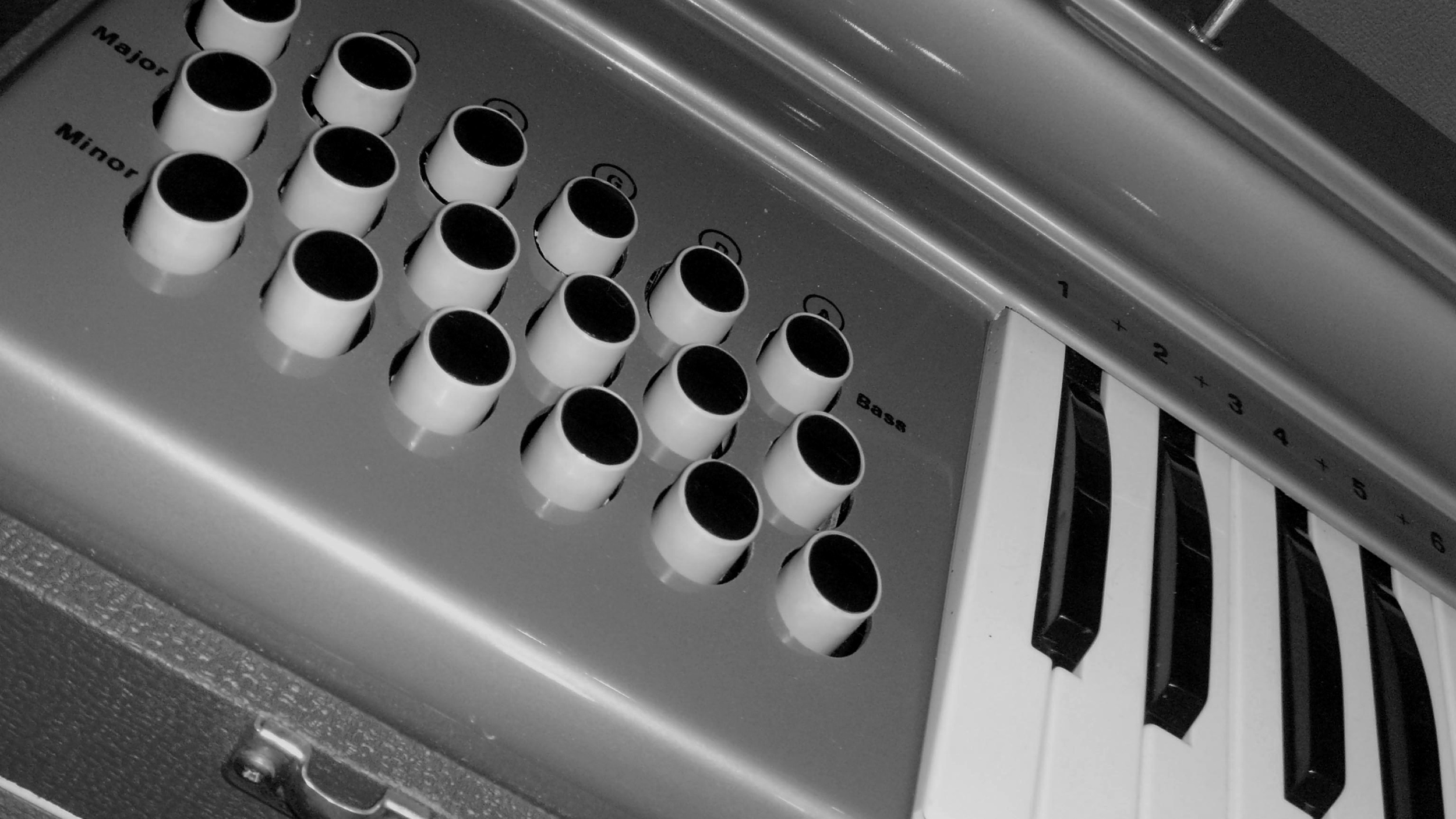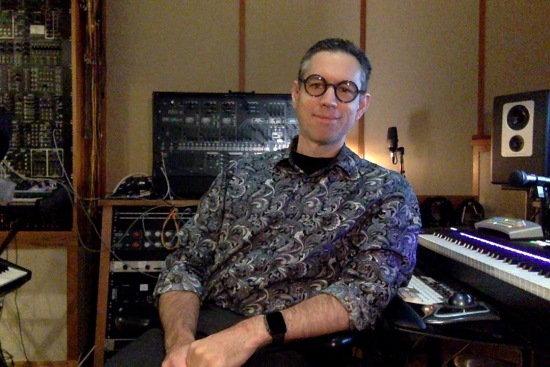
The story
This Sheltone 226 Electric Reed Organ was made in Italy sometime in the late 1970’s. It was purchased from new by Carol’s Grandmother, who gave it to Carol as a fifteenth birthday present. Sadly it proved to be unpopular and was soon confined to the loft, where it remained for over 30 years. When it came back out of the loft earlier this year, the case still contained the two muslin bags of Silica Gel it originally was shipped with!
The Sheltone 226 Organ came in a handsome red and grey Tolex case with white piped trim. It featured a three octave keyboard, a set of Bass note buttons and two sets of buttons for Major and Minor Chords. Sound is generated by an electric fan which blows air over reeds, like an Accordion or Harmonium. The sound comes out through three grills on the back of the organ, there is no volume control.
Carol’s Sheltone Organ was recorded using a Carlsbro CMW20 Dynamic Microphone into a Line 6 UX-8 Audio Interface. Noise reduction and level adjustments were executed in Audacity and Propellerhead Reason respectively. Cropping, loop and root note assignment where completed in Björn Bojahr’s excellent (and free) Session 2 and Endless softwares, which can be found here: https://www.bjoernbojahr.de.
The Kontakt instrument dispenses with the chord buttons, but the bass notes have been added to the bottom octave of the keyboard. As this is an acoustic instrument I have added the rather clunky keybed noises as round robin layers. And for added realism you can activate the fan noise and on/off switch by depressing C1 on your keyboard.
Reviews for Carol’s Sheltone Organ
- Sound
- Character
- Playability
- Inspiration
- GUI
Leave a review to let others know what you thought of the instrument!
Well sampled, sweet character
This is an really well sampled reed organ that comes in a very barebones patch, so it is just you and your imaginantion. I'd characterize its sound as "young", if that makes any sense. It also features a release sample, and at some notes you might notice a slight delay before the sound activates, so keep that in mind. An interesting thing that came to me was that, if you try to play in a more staccato way, it almost sounds like it's being played in reverse! -mind blown- Be careful though, because by default it is VERY loud, so I'd set it around -20db just to be safe from potential peaks when playing with both hands.
Fan Organ
Recording and sampling fan organs is really tough because you always get that fan noise in there. The noise reduction is pretty amazing in this sample pack. There seems to be a resonant peak around 3-4k in these sounds. That makes it a little hard to listen to. I was almost tempted to low pass filter these sounds because I think it might make them more usable.
Bright buzzy sound but still cool
At first i thought i didn't like this sound very much. Its really buzzy and kind of piercing in the high end. But the more i played around with it the more i liked it. Id recommend cutting out some high end. It has a very kind of childish sound that i cant see myself using often but i think its gonna be a good one to keep around just in case, maybe for a specific scoring situation. I wish there was a GUI, you mentioned you can activate the fan noise, it would have been nice to be able to do this right in the GUI. Definitely a unique instrument both in general and for pianobook



